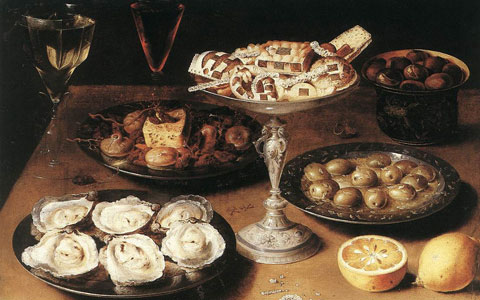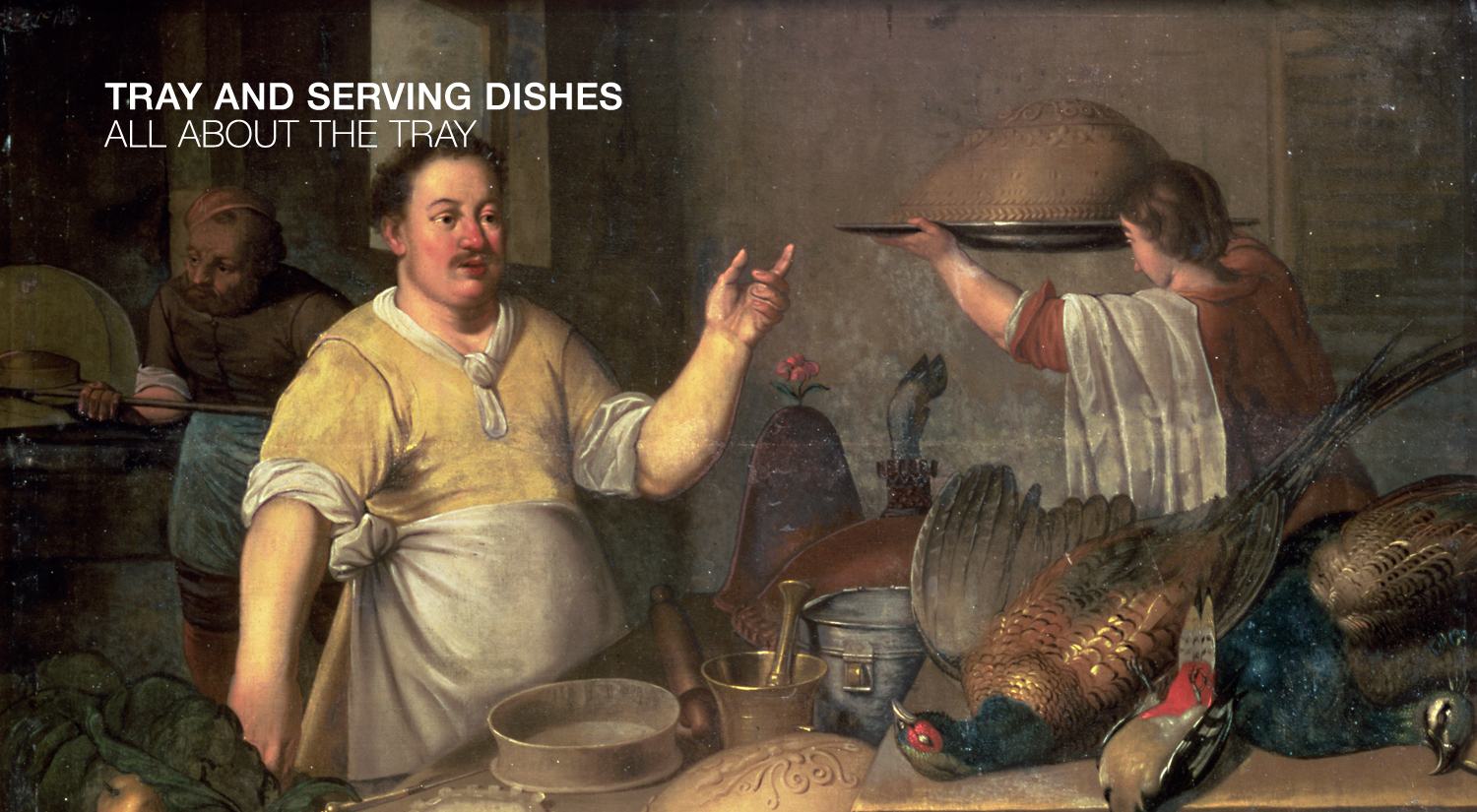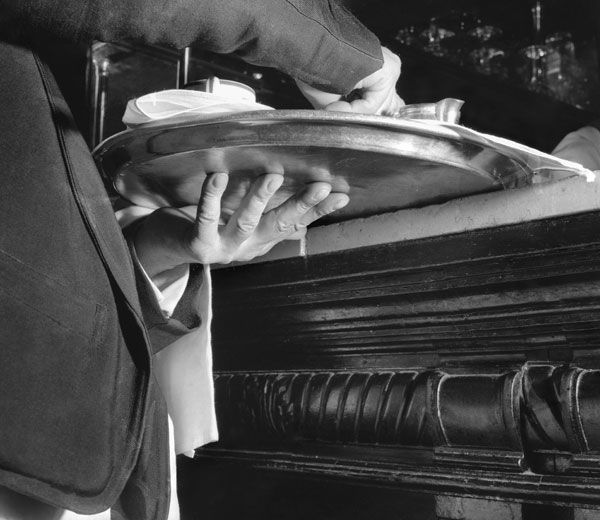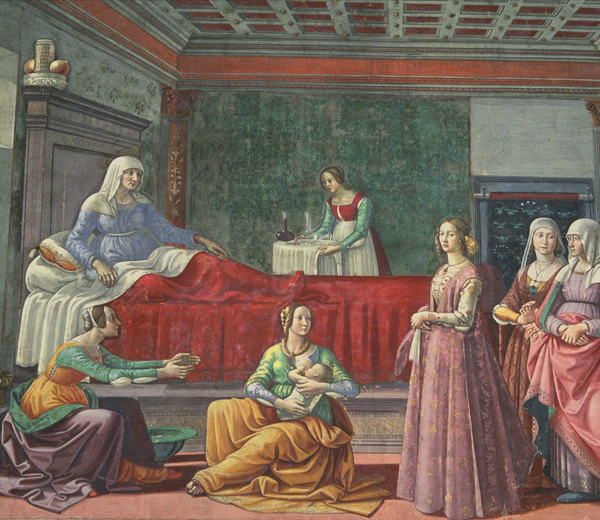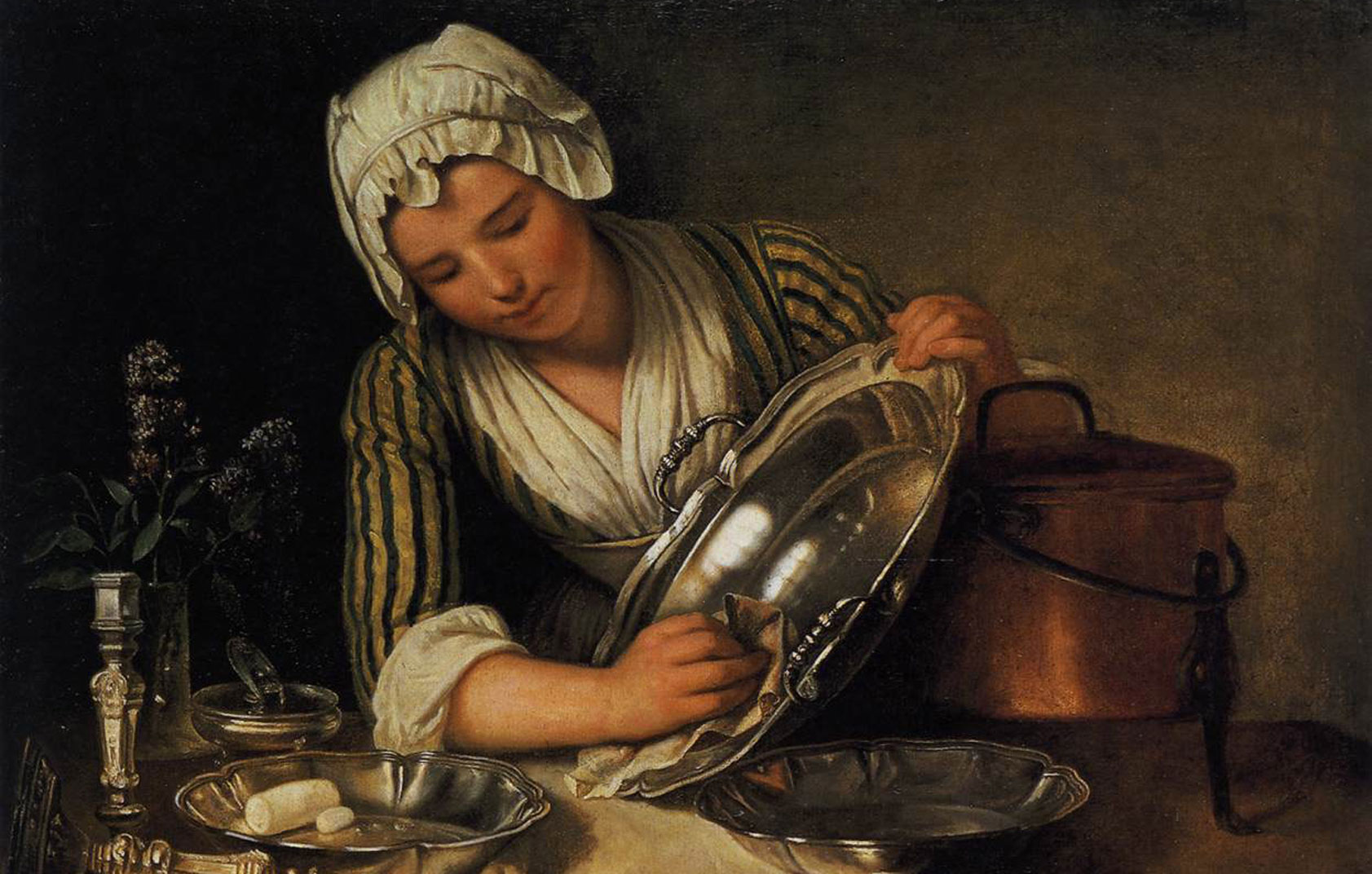
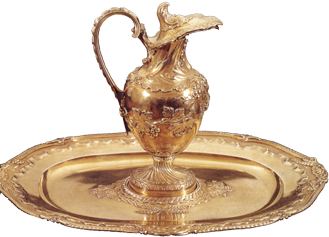
Jug with lid and tray, 18th century. Rome, Museo Nazionale del Palazzo di Venezia
Osias Beert, Still Life with Oysters and Pastries, c. 1600–1610. Stuttgart, Staatsgalerie
Top: André Bouys, Girl Polishing a Dish, c. 1737. Paris, Les Arts décoratifs - Musée des Arts décoratifs
Bottom: Bartolomeo Passarotti (follower of), A Baker Making Pastries, second half of the 16th century, detail. Private collection
TRAY AND SERVING DISHES. FROM THE KITCHEN TO THE TABLE
The tray, an object that travels from the kitchen to the table, has an long history behind it that continues today. The first trays were made from painted wood and became widespread in China and Japan, before becoming commonplace throughout Europe in the modern era. Trays were usually made from ceramic or, more commonly, metal, particularly silver. The tray has raised edges or a wide rim and may have handles. Its primary function is carrying the serving dishes containing the food to the table, keeping them warm and permitting a secure grip.
However, the tray can also be used to facilitate the table-laying process. The large and robust service tray, usually rectangular and made from metal, has quite a high rim and, if rectangular, two handles on the shorter sides. It is a useful tool for carrying a good number of plates to the table at the same time, making it quicker to lay.
In the 17th and 18th century, the cleaning of metal dishes and trays was strongly recommended and once a year all the metal items were cleaned by the kitchen boys, with the demand for hygiene and the quest for a polished finish involving the domestic staff in polishing the metal tableware.
